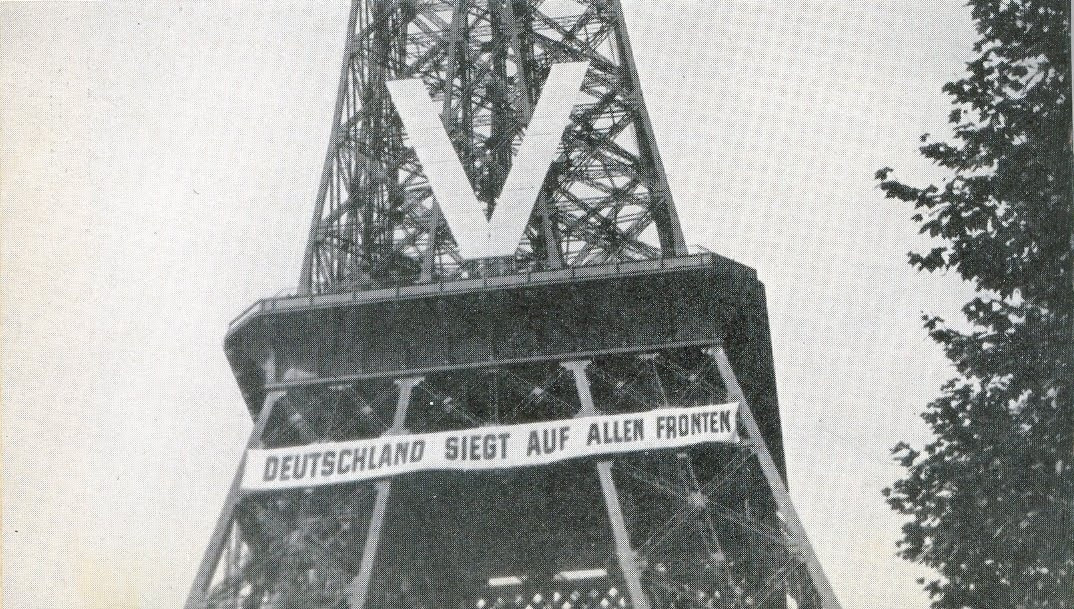The propaganda officers just changed Sieg to Viktoria, alluding to the “Germano-Latin” tradition. They said the use of V’s by civilians was a sign of support for Germany. They just used Viktoria because it had to start with V, and the V originally meant “V for victory” when Churchill used it, so they probably needed something similar in order to not make it too obvious. When the Germans started their campaign, Churchill noted that they probably meant “verloren”, German for defeat. The French resistance would often alter one letter to these type of banners and the message was transformed to Deutschland Liegt auf allen Fronten – Germans lie on every frontline. Upon the German occupation of Paris in 1940 the lift cables of the Eiffel Tower were cut by the French. The Tower was closed to the public during the Occupation and the lifts were not repaired until 1946. In 1940 German soldiers had to climb to the top to hoist the swastika, but the flag was so large it blew away just a few hours later and was replaced by a smaller one. In ancient Roman religion, Victoria was the personified goddess of victory. She is the Roman equivalent of the Greek goddess Nike. Unlike the Greek Nike, the goddess Victoria was a major part of Roman society. Multiple temples were erected in her honor. Winged figures, very often in pairs, representing victory and referred to as “victories”, were common in Roman official iconography, typically hovering high in a composition, and often filling spaces in spandrels or other gaps in architecture. These represent the spirit of victory rather than the goddess herself. They continued to appear after the Christianization of the Empire, and slowly mutated into Christian angels. Notify me of new posts by email.
Δ Subscribe
